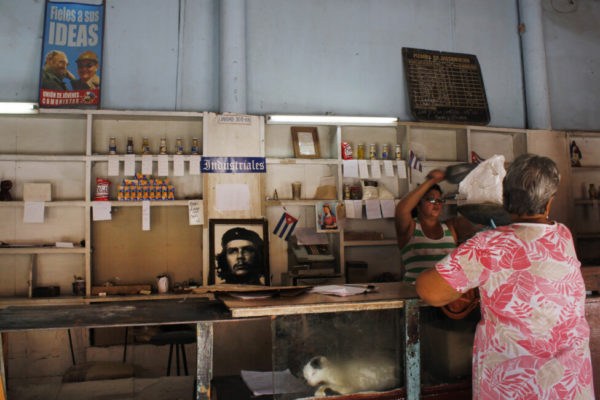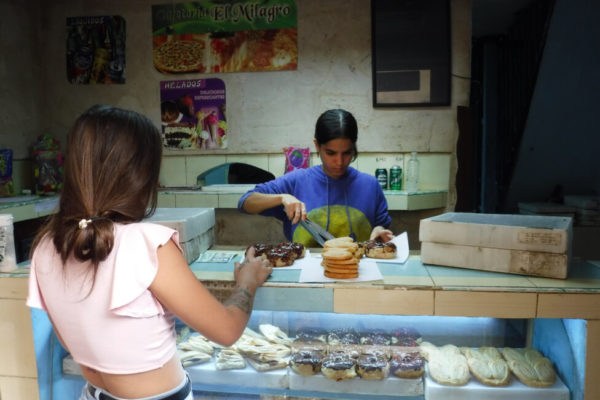The Bitter Wait for the Recovery of Cuba’s Sugar Industry

It might seem unbelievable, but Cuba, once the world’s leading producer now has to import sugar from Brazil and France to meet its internal consumer needs
HAVANA TIMES – Delays in the distribution of rationed sugar, as well as shortages and high prices of the product on the informal market confirm the bad moment of the sugar agroindustry in Cuba, the once strategic sector that distinguished the country and today is in urgent need of modernization and productive diversification.
“It’s hard to find,” Ada Figueras confessed to IPS, who remembers that in her house, years ago, there was no shortage of sugar for fruit jams, guava shells, and other desserts made by her expert confectioner’s hands.
“Now I leave what little there is for coffee, grandchildren’s yogurt or some sweet that I sometimes make. On the street (informal market), when you find it, it is very expensive,” added the retiree who lives in the eastern city of Las Tunas.
Sugar is one of the basic foods rationed on the island, at a rate of four pounds per month per person offered through a ration card. In recent months there have been delays in distribution and non-rationed sales disappeared in state markets or even in the dollar stores.
People resort to barter or the black market to buy additional quantities at prices of around $1.50 USD per pound in a country with an average monthly salary of around 35 dollars and pensions and the minimum wage under $20, at the official 120 X 1 exchange rate. IPS spoke with residents of some of the 15 Cuban provinces.
Mario Coello, an electrical worker from the eastern city of Holguín told IPS that “it is increasingly difficult to drink a guarapo (cane juice) or eat a raspadura (solid sucrose sweet, derived from the boiling and evaporation of guarapo), something that ‘encouraged’ the stomach when faced with hunger or thirst, just like sugar water.”
However, doctor Ivon Zaldivar doesn’t seem to miss the sugar. She reports that for years in her family, made up of her husband, her mother-in-law and her two children are consuming little sugar by choice. “We are used to drinking natural juices and make desserts with little sugar.”
A resident of Havana, Zaldívar told IPS that a significant part of the island’s population are high sugar consumers, which is also present in highly-demanded processed products and beverages. “Its consumption should be moderated, because it brings cavities, as well as being a risk factor for obesity, diabetes and cardiovascular diseases,” she warned.

Adverse factors
The disappearance of the Socialist Bloc at the beginning of the 1990s hit the once locomotive of the Cuban economy that had the Soviet Union as its main market, as well as the supplier of fuel for an agro-industry that incorporated a high percentage of mechanization.’
The 2021-2022 harvest produced 473,000 metric tons of sugar, the worst result in more than a century. For 2023, the government plan contemplates 455,000 tons, barely 5% of the 8.1 million tons obtained in 1989.
The current production is even far from covering domestic consumption levels, estimated at around 600,000 tons per year.
To guarantee rations, as well as the needs of tourism, and the production of medicines and manufacturing, the island has imported sugar from Brazil and France, which increases external dependence and limits food sovereignty, experts say.
The US embargo is pointed out as one of the factors hindering the arrival of fuels, fertilizers, herbicides, and spare parts for mechanized equipment. Such are available in other markets, but a lack of foreign currency is the key problem for importing from wherever.
Pests, tropical cyclones, intense rains, or prolonged droughts in the last decade has also affected the plantations.
Degraded land, deficient plantings, scarce irrigated areas, together with the technological obsolescence of sugar mills and machinery conspire against agricultural and industrial yields.
Since 2012, “sugar production goals have not been fulfilled… and each harvest in recent years has produced less sugar… We have reached a vicious circle. We want to do more; we want to grow, that is our desire, but each time we have less cane and each time the mills are more deteriorated,” President Miguel Díaz-Canel acknowledged in June 2022 in a workshop with managers, industrial technicians and sugarcane producers.

Saving the sugarcane agribusiness
In December 2021, based on instructions from former President Raúl Castro (2008-2018), the Central Committee of the Communist Party, the only party allowed in the country, approved a package of dozens of measures aimed at “saving” the Cuban sugar industry.
“The country needs sugar and derivatives, but now there is little cane and less sugar mills, the land has been lost, facilities have disappeared and an industry that took centuries to build was almost destroyed in just a few years,” said retired agronomist Ramón Escobar, who worked at the dismantled Camilo Cienfuegos sugar mill, in Hershey, a town in the western province of Mayabeque.
Economist Armando Nova noted that the decrease in production is also due to some negative effects of the restructuring of the agro-industry starting in 2002, called Tarea Álvaro Reynoso, the name of the notable 19th century Cuban scientist who studied sugar cane.
Due to the low price of sugar at the time on the international market, starting in 2002, Fidel Castro ordered to begin a process of resizing and restructuring the industry to reduce costs and produce no more than four million tons of sugar per year.
From that process, 56 of the 156 existing plants survived, more than 100,000 jobs were eliminated and the cultivated area decreased from two million to some 750,000 hectares, according to reports.
The strategy also “had unfavorable social effects,” as well as “for the sugar production culture and tradition, passed down from generation to generation for centuries,” Nova told IPS.
With the paralysis of the economic life of the bateyes (sugar mill communities) and other surrounding communities, many residents emigrated to the cities in search of employment, and part of the human capital formed over decades in scientific and technical institutions in the country was lost, in addition to identity practices.
“This affected the stimulus and interest in sugar cane production, the pillar of an agroindustry with a transversal and systemic effect for the entire Cuban economy,” Nova said.
During the 2022-2023 harvest, which began at the end of November and should last until May, only 23 mills will grind at different stages.
According to official figures, more than 180,000 people – some 700,000 counting families – are still directly or indirectly linked to the sugar industry in this country of 11.1 million inhabitants.

Necessary incentives
Experts believe sugarcane (Saccharum officinarum) the “green gold”, is capable of providing solutions to three major human problems: food production, energy deficit and environmental preservation.
In addition to sucrose, the crop provides animal feed, alcohol, ethanol used as vehicle fuel, biomethane for cooking, as well as biomass to obtain electric energy.
Bagasse, cellulose, yeast, biofertilizers and derivatives for biological and chemical research, as well as special products used in advanced technologies is extracted from the process.
According to executives of the Azcuba Sugar Business Group, a state entity that replaced the former Ministry of Sugar in 2011, the program to save the sugar agroindustry seeks to stop the decline, recover and make cane production sustainable, in order to obtain more sugar and other value added products.
Some of the measures, for example, seek to increase the areas under irrigation from the current 15% to 32%. The plans always looks promising on paper, the problem is what happens in practice.
Armando Nova believes the current incentives are “almost zero.” “The high degree of obsolescence of agro-industry requires significant amounts of capital for its recovery and modernization,” he stressed.
In addition to the projects in the foreign investment portfolio, he considered it necessary to add stimuli “in terms of the return of invested capital or to invest, the possibility of creating mixed companies and even with 100% participation of external capital.”
And something no less important, the expert pointed out, “is to create direct incentives for national producers, with payments in foreign currency for the final production, both of sugar and derivatives.”
He advocated not excluding the possibility that small and medium-sized private Cuban companies be allowed to participate, “particularly in technological services, and forming part of the productive chain.”
Together with the transformation of the economic-productive management model “for a new one that starts from the territory”, Nova recommended urgently contemplating “the advantages of agroecology – which implies minimizing or totally eliminating dependence on agrochemical inputs-, as well as precision agriculture, in search of saving on inputs and resources”.






The Cuban government expropriated just over 150 Centrals or sugar mills shortly after the Revolution triumphed in 1959. Cuba was playing a major role in filling the world’s sugar bowl.
Today, only 23 of those original sugar mills are operating. The remainder have been used, abused, unmaintained, and are now unrecoverable. Cuba now cannot even meet its domestic need for sugar.
I have seen the tragedy of those communities, once reliant on their Centrals, who lost their only industry in 2002 with the “rationalization” of the sugar industry. Our local sugar mill has not operated for two years. The economic and social impact is sadly obvious.
Now the government wants us to believe they can solve this 60+ year old problem with little tweaks around the edges but no major change.